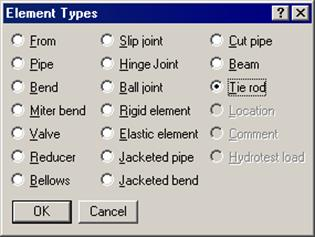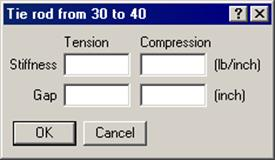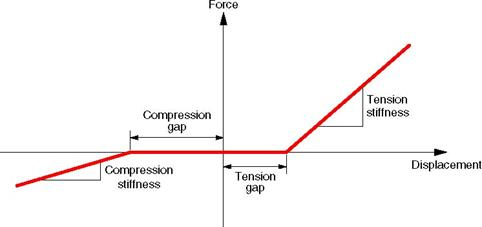Tie Rod
Tie rod is a nonlinear element with different stiffnesses and gaps in tension and compression, used to model tie rods in bellows, chains, etc. The force versus displacement relationship for a tie rod is shown below. Around expansion joints, a tie rod continuously restrains the full pressure thrust while allowing only lateral deflection, bending and torsional rotation.
When the tie rod is in tension, and the displacement is greater than the tension gap, tension stiffness is used. If the displacement is less than the tension gap, zero stiffness is used. Similarly when the tie rod is in compression, and the displacement is greater than the compression gap, compression stiffness is used. If the displacement is less than the compression gap, zero stiffness is used. A Tie rod is input by typing “t” in the Type column or selecting “Tie rod” from the Element Types dialog.

The Tie Rod dialog is shown.

A tie rod can be made “Tension only” by setting the compression stiffness to zero. Similarly, it can be made “Compression only” by setting the tension stiffness to zero. Both Tension and Compression stiffnesses cannot be zero. If there is no tension or compression gap, leave it blank or specify it as zero. See the earlier “Expansion Joints” topic for examples.
